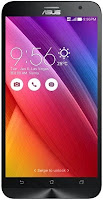With growing range of smart phones in the budget segment and
their amazing value for money proposition, consumers can now choose from a wide
range of devices with great performance and features without the need to have a
fat wallet. Today, we simplify your buying process by bringing you some of the
latest smart phones in the Rs7000 – Rs15000 price bracket that are what we
believe, truly worth the amount you spend.
Redmi 2
 |
| Redmi 2 |
A successor to the Redmi 1s, the Redmi 2 has decent built quality which appears to be better that the previous version. It comes with the same 4.7inch HD IPS display with 312 PPI which is crisp and provides enough detail. On the inside, the phone packs a 1.2 GHz Qualcomm Snapdragon 410 MSM8916 Quad Core chipset with Adreno 306 GPU coupled with a 1GB ram. The performance is decent and the phone does not disappoint you for the most part as it is capable enough to handle all day to day tasks with considerable ease including some high end games.
It runs on Android 4.4 KitKat with Xiaomi’s in
house MiUI on top. The camera is an 8MP shooter and takes good pictures in
appropriate lighting conditions. Xiaomi’s cameras have always impressed us with
their image quality. Overall, for a price of Rs7000, this is probably the best
smart phone you can currently get in the Indian market since its direct
competitor is the Moto E2, which isn’t impressive.
 |
| Lenovo A7000 |
Lenovo A7000
Lenovo has been aggressively pricing their smart phones providing high end features and performance at a lesser price and it has done exactly that in the budget segment as well with its A7000. Sporting a massive 5.5 inch display, an 8MP primary and 5MP secondary camera, it is loaded with a 1.5 GHz MediaTek MT6752m octa core 64-bit processor, a first for the segment. For graphics performance, it has a Mali-760 MP2 GPU along with 2GB ram. The phone also supports 4G LTE and operates on Android 5.0 Lollipop with unique features such as Dolby Atmos sound. For Rs9000, it seems like a good buy, although we will have to do a comprehensive review to test its performance capabilities.
Huawei has been making quite a name for itself
recently with its Honor brand and its Honor 4X is a good overall package at
Rs10500. It has a 1.2 GHz Qualcomm Snapdragon 410 Quad Core
processor, 2GB Ram and a 5.5 inch IPS display, which despite not being Full-HD,
is good enough. Its 13MP camera takes surprisingly nice pictures.
Considering
its competitor is the Moto G2, the Honor 4X is great for its price tag. The
only advantage of the Moto G2 is its stock Android which is the first to get
updates.
The Zenfone series consisted of exceptionally high performance phones with the Zenfone 5 still being one of the best budget smart phones in the market. Asus aims to continue this legacy with its new Zenfone 2 series. Its top of the line version comes with a 4GB ram, which is a first for the Android world and costs Rs20000. The one on this list however is the 2GB version which comes with a budget friendly price tag of 13000 bucks. Powered by an Intel Atom Z3560 Quad Core processor clocked at 1.8 Ghz, the phone comes with a Gfx 6 Series Graphic Chip for good graphics performance along with a 13MP rear and 5MP front facing camera. Its supports 4G LTE connectivity and runs on Android 5.0 Lollipop out of the box with a layer of Asus’s own Zen UI on top. There’s also another variant available which comes with Full HD screen and is priced at 15k. The rest of the specs for both the variants remain exactly the same. Along with Mi 4i, this is the best Android smart phone in its price range.
 |
| Mi 4i |
Mi 4i
A toned down version of the flagship Mi 4, the Mi
4i is impressive with its 1.7 GHz Snapdragon 615 64-bit
octa-core chipset and 2GB of ram. Its 5 inch display is Full HD with 441 PPI. Priced
at 13000, it ticks almost all the right boxes and fairs well in terms of
performance as well. Additionally, its supports dual 4G SIMs and has 5.0
Lollipop version of Android. The only downside to this phone is the limited
internal storage of 16GB without the support for expandable storage.
If you have any questions or queries, please leave them in the comments box or visit the contact section. For latest tech news and updates, subscribe to blog.






